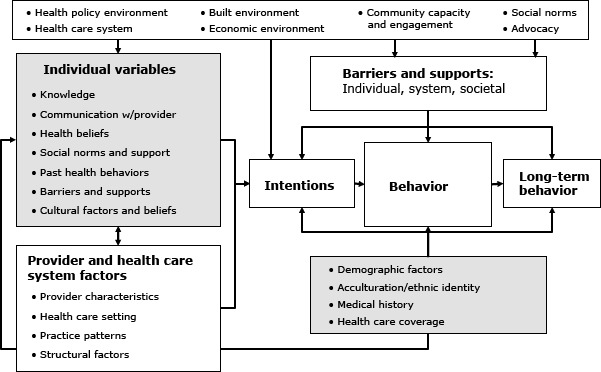Figure.

Health Behavior Framework. Reprinted with permission from Bastani R, Glenn BA, Taylor VM, Chen MS, Nguyen TT, Stewart SL, Maxwell AE. Integrating theory into community interventions to reduce liver cancer disparities: The Health Behavior Framework. Prev Med 2010, 50(1-2):63-67.
